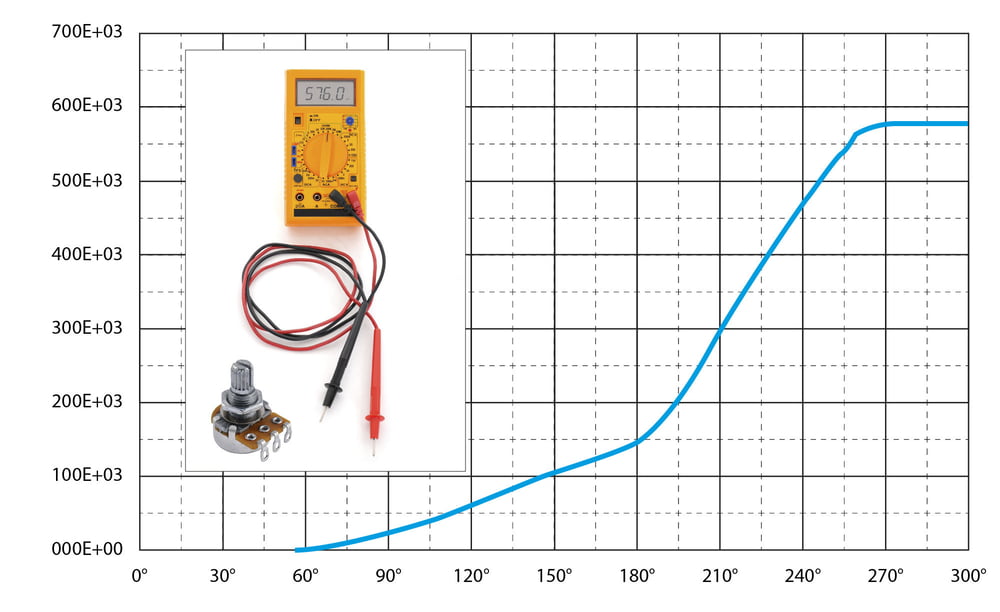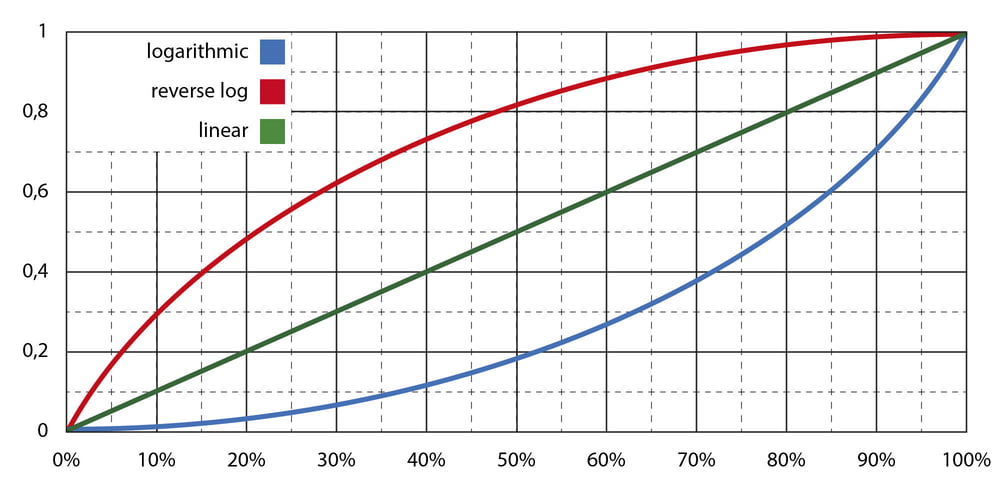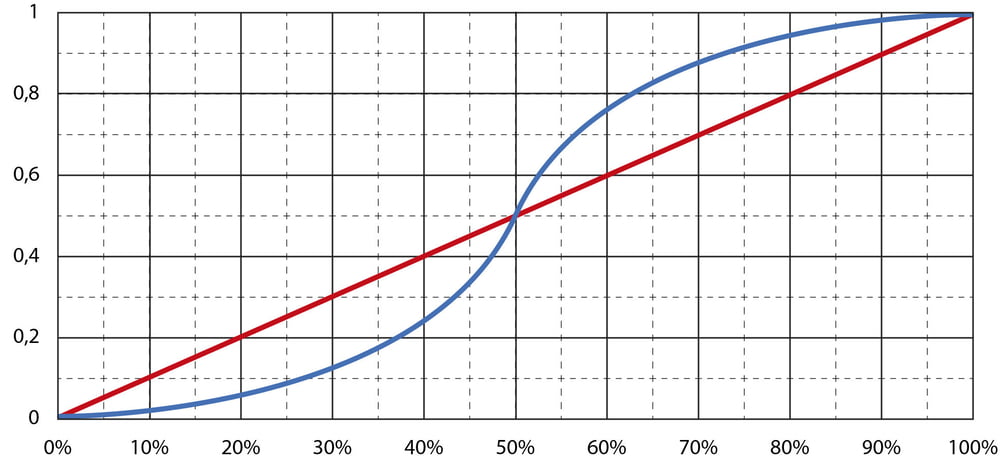6. Tapers and sense of rotation
Originally, a potentiometer's resistance worked on a linear scale; that is, when the pot was set to mid position, the resistance was half the maximum resistance. But it soon turned out this characteristic was insufficient. This is particularly true of volume control. Since human hearing works logarithmically, a linear change in resistance leads to an uneven change in the volume. For this reason, various resistance characteristics, or tapers, were developed.
In order to compensate for the logarithmic behaviour of your sense of hearing, a resistance characteristic was required which, mathematically speaking, corresponds to the inverse function of the logarithm. Thus, the resistance must show the curve of a power function. However, potentiometers with such a characteristic are usually, if wrongly, called logarithmic. To avoid confusion, we will use this technically wrong designation although we know that it is wrong. Let's have a look at the most important types of resistance characteristic:
Generally, two characteristics can be shown, as the potentiometer consists of two resistors. However, we shall confine ourselves to the resistance between the wiper and the input connection. If you turn the wiper clock-wise as far as it will go, the resistance increases with the angle (for the other resistor, the opposite applies).
If you want to determine the resistance and its development relating to the angle, all you need is a multimeter which you can get in any good DIY shop. Connect the multimeter to the potentiometer as shown in the figure. Then set the pot at different angles and measure the respective resistance. A normal potentiometer with an ID resistance of 500kOhm taken from an electric guitar produced the following chart:

Measurement of a pot's resistance profile
Several things become apparent:
- The mechanical angle of rotation is 300°
- The ID resistance is actually 570kOhm, which is a deviation of 14%
- The resistance does not change uniformly with the angle. Thus, the taper is non-linear
- Resistance does not alter throughout the rotation. It begins at an angle of about 50° and stops at about 260°. Thus, the electrically effective rotary angle is only 210°
In fact, manufacturers distinguish between the mechanical and the electric angle of rotation. This discrepancy is usually a feature of the construction and cannot be totally avoided. Thus we arrive at another realization:
A potentiometer is effective for only a section of its mechanical angle of rotation. At either end, about 15% of the rotation are ineffective.
If we focus exclusively on the electric angle of rotation, i.e. the range from 50° to 260°, we see that this comprises the whole range of the ID resistance from 0% to 100%. The profile shown in the figure above is usually called logarithmic. Its counterpart is the reverse log. The following figure shows the three most common resistance profiles:

Graphic representation of various potentiometer characteristics
The logarithmic profile was set up so that a right-handed player can hear an increase in volume when turning the pot clock-wise. To a left-handed player, expecting the reverse behaviour, this will seem quite unfamiliar. For this reason there are dedicated left-handed pots with their greatest resistance at rotary angle 0 and then decreasing. In effect, it is a reverse log pot where the input and output contacts were swapped.
Linear characteristics make no difference for left- or right-handed players. Simply swapping the contacts is sufficient. This leads to your next realization:
Logarithmic potentiometers have a direction of rotation, linear ones do not.
The two logarithmic profiles shown represent a great variety of instruments. How steep a pots curve is depends on its resistance at an angle of 50°. The most commonly used pots here have a resistance of between 10% and 20% for logarithmic profiles, and 80% to 90% for reverse log pots.
Pots with an S-shaped curve are a special development. The following figure shows to possible examples of profiles:

Graphic representation of various potentiometer characteristics
Here, the resistive element is constructed with a logarithmic and a reverse log part. These profiles are rarely required, though, which makes pots with this feature hard to find and quite expensive.





